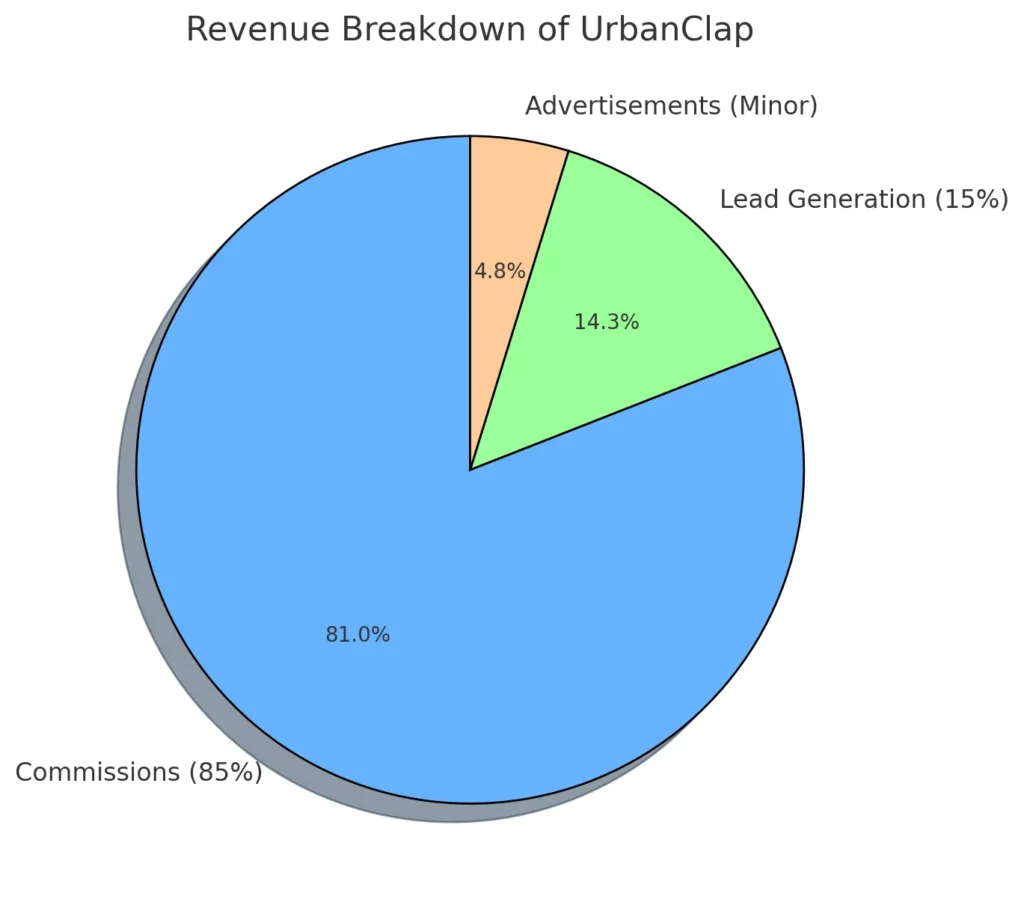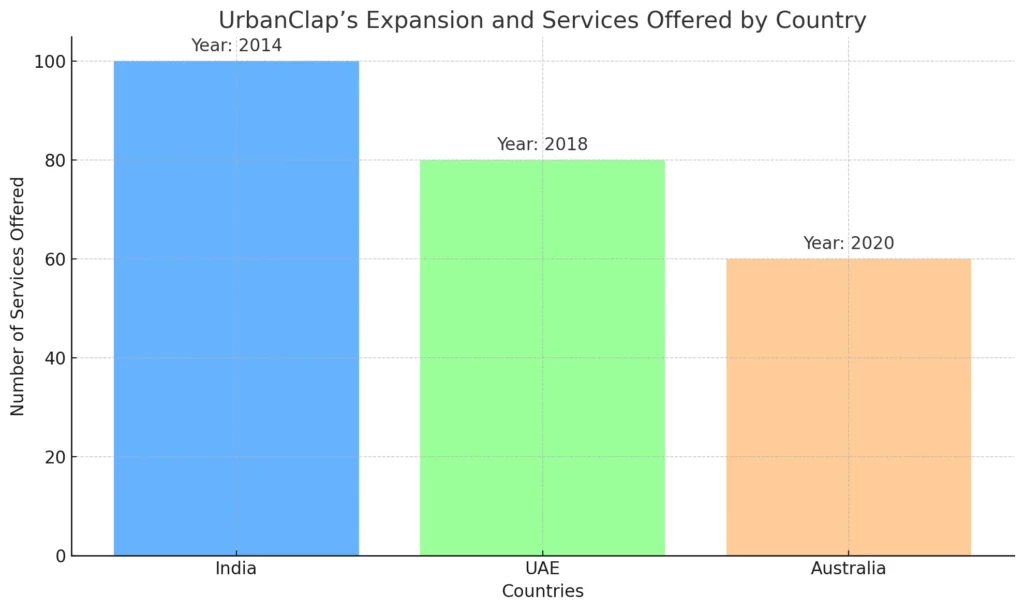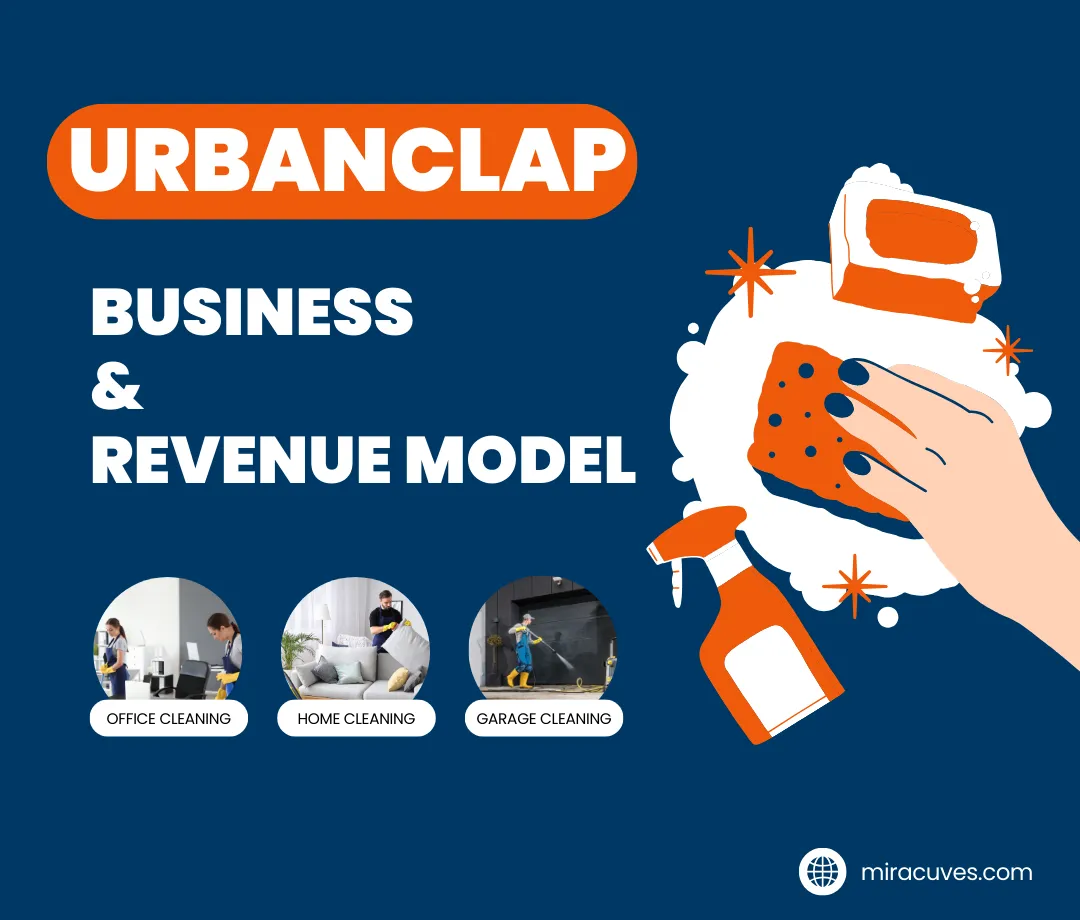UrbanClap, now known as Urban Company, has become synonymous with convenience and quality in the on-demand services market. Founded in 2014, the platform began by solving the fragmented home services market in India. UrbanClap’s transformation into Urban Company in 2020 wasn’t just a rebranding—it signaled its ambitions to expand globally and diversify its service offerings.
This name change reflects the company’s commitment to urban living beyond just home services. By evolving from a gig economy service to an international powerhouse, Urban Company capitalized on the increasing demand for reliable, professional at-home services. From beauty and wellness to home repairs, they built a seamless platform that connects vetted professionals with customers, removing intermediaries and ensuring top-notch service.
The rise of platforms like Urban Company has been largely driven by consumer demand for convenience, especially in post-lockdown times. With people spending more time at home, the need for trusted professionals to deliver services right to their doorsteps skyrocketed. Urban Company met this demand by leveraging technology, maintaining service quality, and expanding into international markets such as the UAE, Australia, and Singapore. Their ability to adapt to local markets while keeping the user experience consistent was key to their growth.
UrbanClap Business Model and Revenue Model: A Gamechanger in the Gig Economy
Urban Company operates through a dual revenue model that maximizes both customer satisfaction and service provider empowerment. By streamlining home services and making them accessible via mobile apps and websites, they created a platform that benefited both sides of the market—users looking for quick, quality services and gig workers seeking flexible, reliable work.
Overview of UrbanClap’s Business Model
UrbanClap’s core business model is based on connecting users with local service professionals via a seamless, technology-driven platform. Whether you need a plumber, beautician, or handyman, UrbanClap simplifies the process by offering a curated selection of trusted service providers. The company built a scalable platform by focusing on two key aspects: user-friendliness and efficiency.
The business operates on a two-fold model:
- Fixed-charge services: Users pay for services like plumbing or cleaning upfront via the app.
- Lead generation services: For more flexible services (e.g., photographers, designers), service providers pay UrbanClap for leads, and users can choose the best fit for their needs.
By eliminating middlemen, UrbanClap ensures that customers receive reliable, timely services, while professionals get direct access to clients. This model, coupled with their user-centric technology, positioned UrbanClap as a leader in the home services platform and on-demand service apps markets.
Also check : MyFitnessPal Business Model: Freemium Strategy and Revenue Insights
Key Features of the UrbanClap Business Model
UrbanClap’s success is built on a customer-centric approach, ensuring that users can trust the platform. To enhance safety and reliability, all service providers undergo background checks and must comply with standardized pricing, which prevents inconsistent charges and ensures transparency.
On the technical front, UrbanClap leverages artificial intelligence (AI) and machine learning (ML) to match customers with the best service providers, ensuring satisfaction through smart algorithms that understand user preferences.
Furthermore, the platform has empowered freelancers by turning them into micro-entrepreneurs. UrbanClap offers them resources like credit, training, and inventory procurement, helping gig workers thrive in the rapidly growing freelance marketplace. This model provides freelancers with new opportunities, making UrbanClap a leading player in the gig economy apps sector.
Want to start a home services app like UrbanClap?
Our expert team can help you create a scalable business model
that includes service commissions, partner
management, and customer loyalty programs.
Revenue Streams of UrbanClap
| Revenue Stream | Percentage of Total Revenue | Description |
|---|---|---|
| Commissions | 85% | UrbanClap charges service providers a percentage for each booking. |
| Lead Generation Fees | 15% | Service professionals pay for customer leads. |
| Advertisements | Minor | Businesses pay for ad placements on the platform. |
UrbanClap’s revenue model is designed to generate income through multiple streams. The primary source is commissions, where service providers are charged a percentage (ranging from 10% to 20%) for every successful booking. This accounts for approximately 85% of UrbanClap’s revenue.
Additionally, lead generation fees are charged to professionals who want access to customer leads, contributing about 15% to the revenue. Lastly, UrbanClap monetizes through advertisements, allowing businesses and service providers to pay for promotional visibility on the platform.
This diversified Urban Company revenue model ensures consistent growth and profitability across different channels, making it a leader in the UrbanClap clone market.

UrbanClap’s Growth and Expansion Strategy
| Country | Year Entered | Primary Services Offered |
|---|---|---|
| India | 2014 | Beauty, wellness, home repairs |
| UAE | 2018 | High-end beauty, home services |
| Australia | 2020 | Beauty, wellness |
UrbanClap’s expansion strategy has been both strategic and ambitious. After establishing dominance in Indian cities, the company expanded to international markets like UAE and Australia, targeting regions with high demand for quality at-home services.
UrbanClap also shifted focus to high-end home services like beauty and wellness, tapping into more profitable segments. By analyzing customer demand and profitability, UrbanClap strategically prioritized services that offered the highest growth potential, helping them solidify their presence as a top household services platform connecting local service providers globally.
As UrbanClap expanded into global markets, it rebranded to Urban Company, reflecting its broader scope and ambitions. Read more about Urban Company’s international expansion here.

Competitor Comparison
UrbanClap’s business model has several competitors like Housejoy and Handy, but it stands out due to its focus on quality, technology, and customer experience. Unlike competitors, UrbanClap offers more robust background checks, standardized pricing, and uses AI-driven service matchmaking, which has earned greater customer trust.
While competitors also connect service providers to customers, UrbanClap’s integration of AI and machine learning into its platform has helped it streamline the user experience, making it one of the most trusted names in the gig economy apps and on-demand service apps industry.
Challenges Faced and Overcome by UrbanClap
In its early stages, UrbanClap faced several challenges, including scaling operations, maintaining consistent service quality, and expanding into Tier-2 cities. Managing a growing network of service providers while ensuring quality was a major obstacle.
UrbanClap overcame these issues by implementing AI and machine learning (ML), which improved service matchmaking, and introducing strict quality checks for service providers. These innovations helped streamline operations, allowing UrbanClap to scale efficiently and maintain its reputation as a trusted name in the on-demand service apps industry.
Why UrbanClap’s Model Succeeds in the Gig Economy
The post-lockdown world saw a surge in demand for reliable at-home services, making UrbanClap’s model highly relevant. UrbanClap ensures quality, trust, and reliability in the fragmented gig economy by conducting rigorous background checks and using AI-driven service matchmaking.
The platform also empowers service professionals by offering training, financial support, and consistent work opportunities, enhancing their income potential. By transforming freelancers into micro-entrepreneurs, UrbanClap has become a leader in the gig economy apps and freelance marketplace sectors.
UrbanClap has thrived in the rapidly growing gig economy, which has seen major transformations in various industries. Learn more about the service industries driving this on-demand economy.
Conclusion
UrbanClap’s innovative approach to on-demand services, leveraging AI and quality checks, has made it a leader in the gig economy. By empowering service professionals and ensuring trust for users, UrbanClap has revolutionized how home services are delivered. As the gig economy continues to expand, UrbanClap is poised to evolve, focusing on global expansion and tech-driven efficiency, shaping the future of on-demand platforms.
Learn more about how you can launch a similar on-demand service platform with Miracuves Solutions. Explore ready-made solutions for UrbanClap clones and other home service platforms to kickstart your business today! Contact us.
Ready to launch your own home services platform?
Request a demo today to see how we can help you implement a profitable business model with flexible pricing, service commissions, and subscription features.
FAQs
What is UrbanClap’s business model?
UrbanClap connects users with local service providers through a platform that charges commission on bookings and offers lead generation services.
How does UrbanClap make money?
UrbanClap earns primarily through commissions, lead generation fees, and advertisements.
What makes UrbanClap different from its competitors?
UrbanClap focuses on quality assurance, using AI for service matchmaking and rigorous background checks for service providers.
How did UrbanClap expand internationally?
UrbanClap expanded to markets like UAE and Australia, focusing on premium services.
How does UrbanClap benefit service providers?
UrbanClap empowers freelancers by offering training, credit, and direct access to customers, helping them grow their income.







